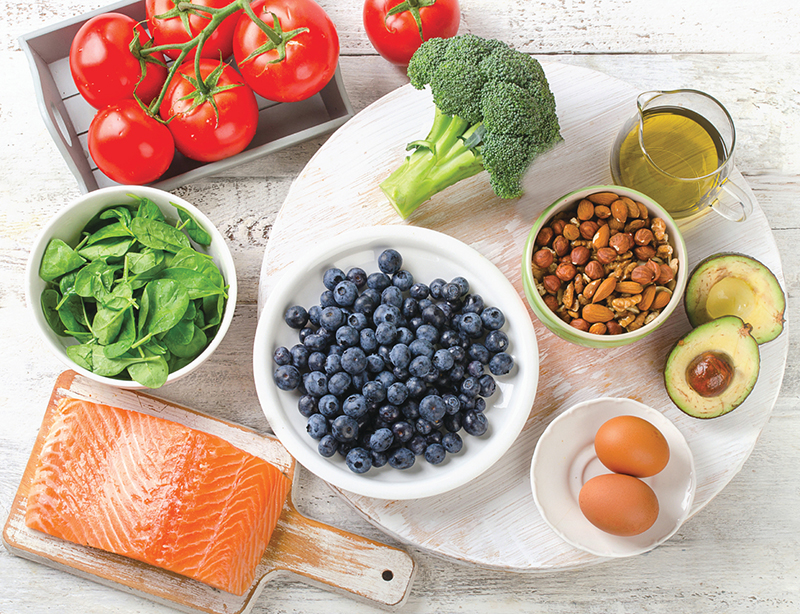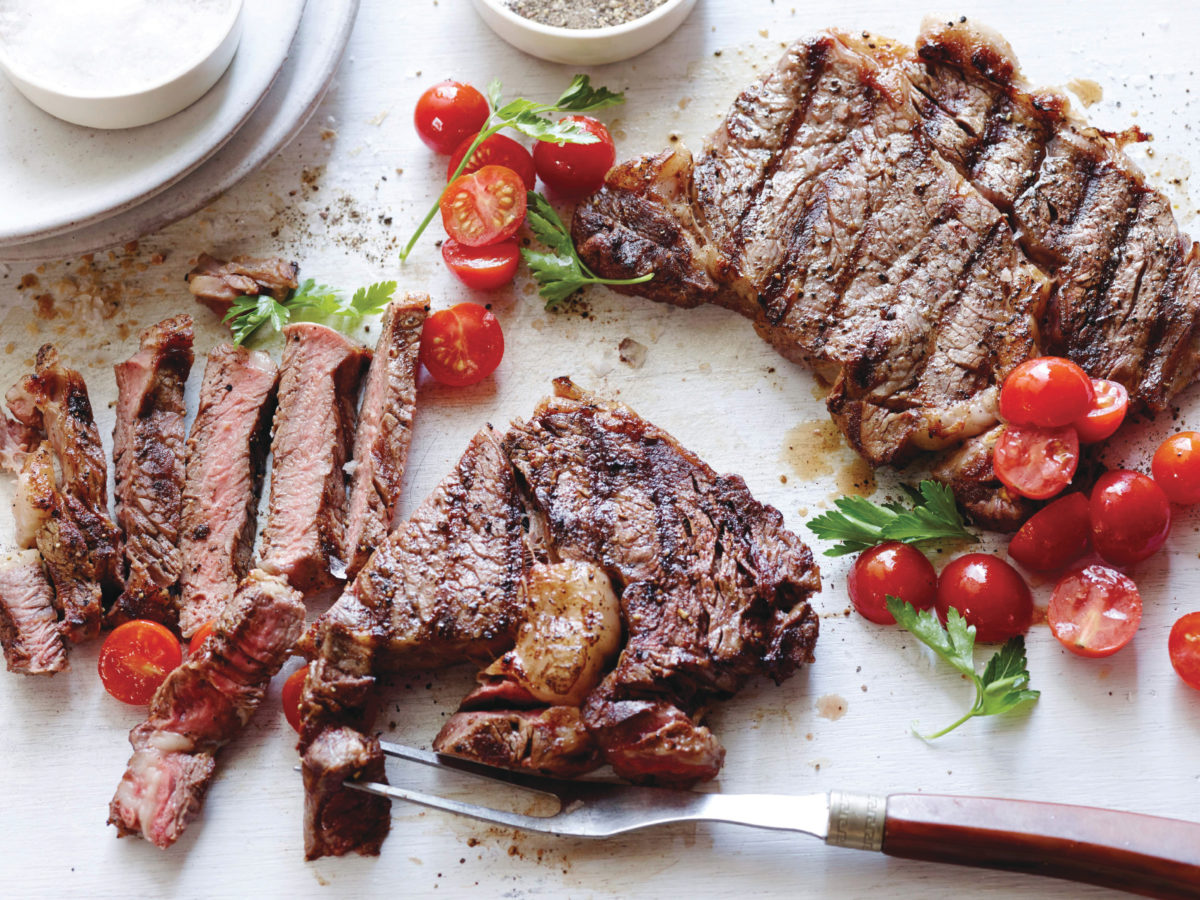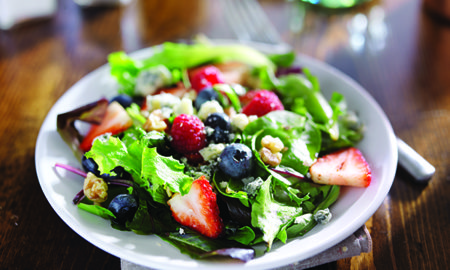

“Fat” used to be bad word in fitness circles. Not anymore.
By George L. Redmon, PhD, ND
PQ: These new findings concerning the benefits of saturated and unsaturated fats should serve as an anabolic, thermogenic, and metabolic wake-up call for anyone who is in the gym.
PQ: Humans can manufacture just about every molecule of glucose we need from a combination of fat and protein in the diet, essentially switching metabolism from relying solely on glucose to running on healthy fats.
PQ: Low intakes of fat and high carbohydrate consumption reduces whole body lipolysis, total fat oxidation, and fatty acid oxidation during fasted exercise.
Health officials have continuously sounded the alarm concerning the dangers of excess consumption of saturated fats. These fats where believed to increase the development of heart disease, obesity, and other metabolic disorders. However, a recent collaborative study by researchers at the University of Cambridge (United Kingdom) and Harvard School of Public Health has shown that saturated fats aren’t as dangerous as once believed.
What these investigators discovered was that over-consumption of polyunsaturated fats while substantially reducing consumption of saturated fats did not reduce the incidence of heart disease. What has been discovered is that trans fats are the most dangerous fats. These artificially produced fats differ from naturally occurring fats found in plant oils and animal fat. Produced when vegetable oil is solidified at high temperatures via the use of hydrogen, trans fats are listed as partially hydrogenated oils. The hydrogenation process degrades and distorts the chemical configuration of fat, which the cells are incapable of metabolizing properly.
Separating the negative aspects concerning trans-fats, these new findings concerning the benefits of saturated and unsaturated fats should serve as an anabolic, thermogenic, and metabolic wake-up call for anyone who is in the gym.
The Anabolic Aspects Of Fat
Despite fat being a potential nemesis in your attempts to build and maintain a lean muscular body, from an improved growth, workout, and metabolic standpoint, you need both saturated and unsaturated fatty acids. For example, 50 percent of your cell membranes are comprised of saturated fatty acids. Sports nutrition expert and powerlifting legend Dr. Fred Hatfield states that as components in the structure of cell membranes, they are vital to proper growth. He also notes that saturated fatty acids transmit signals that stimulate metabolism, proper nerve and brain function, as well as the release of insulin, one of your body’s most anabolic hormones. Remarkably, researchers of the Nutrition, Metabolism and Genomics Group at Wageningen University in the Netherlands remind us that polyunsaturated fatty acids (PUFAs) play an integral role in modulating genes that increase the metabolic rate. Also, when released into the bloodstream, polyunsaturated fatty acids are metabolized in two different cellular partitions, the peroxisomes and the mitochondria. Well-known medical journalist Lorna R. Vanderhaeghe, the author of Healthy Fats For Life, states that peroxisomes are found in all tissues and abundantly in the liver and kidneys. They break apart long-chain fatty acids and are very thermogenic (heat producing). Paradoxically, PUFAs jump-start and increase the thermic activity of peroxisomes and fats are transported into mitochondria cells to be burned and utilized as fuel. Additionally, well-known integrative health-care researchers Michael R. Eades. MD, and Mary Dan Eades MD, the authors of Protein Power, note that saturated fat also prompts the liver to release fatty acids. They remind us that saturated fats protect the liver from toxic by-products generated via alcohol consumption and medications, including acetaminophen and other nonsteroidal anti-inflammatory drugs (NSAIDs) used to relieve pain. The Testosterone-Fat Connection At the other end of this spectrum, fat plays a critical role in the manufacture of testosterone. In fact, studies show that maintaining an intake of fat at 25 to 40 percent of your daily calorie intake appears to generate the best results. Ironically, renowned sports nutrition researchers Jeff Volek, PhD, and William J. Kraemer, PhD, found that ratios of saturated fats and monounsaturated fatty acids) raised testosterone levels more efficiently than the ratio of polyunsaturated fatty acids to saturated fats. Inopportunely, this latter concentration significantly decreases testosterone production and occurs due to the increased susceptibility of PUFAs to peroxidation (the oxidative degradation or damage of lipids). Furthermore, studies indicate that lower intakes of fat increase levels of SHBG (sex-hormone binding globulin) and lower free testosterone levels. As you know, most circulating testosterone is bound to the hormone SHBG, meaning what isn’t, about two percent, generates all those anabolic proficiencies such as muscle growth, increased strength, and fat-burning. The take-home message here, lower intakes of fat (less than 20 percent) produces significantly lower concentrations of testosterone.

Improved Performance And Recovery
Walter Willett, MD, of Harvard University maintains that plant oils such as canola, corn, olive, peanut, as well as nuts (almonds, peanuts, pistachios, and walnuts); fish, particularly oily fish such as salmon, canned tuna; and flax seeds are good sources of unsaturated fatty acids, the healthiest types of fat. Researchers at Urmia University in Iran reported that 1.8 grams a day of omega-3s inhibit delayed onset muscle soreness at post-workout. Investigators at the University of Wollongong in Australia found that omega-3 polyunsaturated fatty acids are freely integrated into heart and skeletal muscle membranes. Because of this physiological anomaly, omega-3s have the ability to decrease whole-body oxygen demand during exercise. This is a critical point in sustaining full-bodied workouts, as improved oxygen use increases workout performance, recovery, and increases whole- body energy levels due to improved cellular oxygenation.
Fat And The Immune System
Although krill oil, a rich source of omega-3 fatty acids, doesn’t appear to modify workout performance, researchers at the University of Aberdeen in the United Kingdom reports that it reactivates exercise-induced down-regulation of the immune response. They found that two grams a day of supplemental krill oil for six weeks increased PBMC IL-2 (peripheral blood mononuclear cell) production and natural killer cell cytotoxic activity (while blood cells) within three hours following a workout in both healthy young males and females. Conversely, in a 2009 study appearing in Nutrition Research, scientists reported that two grams a day of krill oil for four weeks increased concentrations of omega-3 fatty acids in overweight and obese men and women. It turns out that omega-3s found in krill oil are five times more absorbable than those found in fish. Nevertheless, one of the pitfalls concerning fat is that it is freely stored within fat tissue and to a lesser extent within the muscle. Uniquely, krill oil has the ability to increase beta-oxidation, an intricate process in which fatty acids are broken down by various tissues to produce energy.
Energized And Chiseled
Individuals who regularly engage in resistance training generally realize greater utilization of fatty acids, fueled by increased lipolysis (release of triglycerides stored in the muscle). For instance, researchers of the School of Sport and Exercise Sciences at the University of Birmingham in the United Kingdom report that the greatest rates of fat oxidation occur at intensities between 59 percent and 64 percent of maximum oxygen consumption in trained individuals, and between 47 percent and 52 percent within the general population. Oddly, investigators of the Human Performance Laboratory at the University of Texas and the Department of Exercise Science at the University of Southern California remind us that low intakes of fat and high carbohydrate consumption reduces whole-body lipolysis, total fat oxidation, and fatty acid oxidation during fasted exercise. This glitch occurs due to decreased concentration of intramuscular fats. Increased glucose concentrations also decrease fat oxidation by inhibiting the transport of fatty acids across mitochondrial membranes. Unfortunately, fat-burning occurs within mitochondrial cells. This physiological mishap was recently highlighted by researchers at the University of Lausanne in Switzerland. In their study, whole-body lipogenesis (the transformation of non-fat foods into body fat) following glucose loading was markedly increased at the expense of glycogen. They also noted that increased carbohydrate intake amplified mRNA (molecules that send genetic information from DNA) levels for three major fat-forming enzymes (sterol regulatory element-binding protein-1c, acetyl-CoA carboxylase, and fatty acid synthase).
Burning Fat With Fat And Protein
Nora T. Gedgaudas, the author of Primal Body, Primal Mind and Primal Fat Burner, cites that humans can manufacture just about every molecule of glucose we need from a combination of fat and protein in the diet, essentially switching metabolism from relying solely on glucose to running on healthy fats. Other researchers suggest utilizing healthy supplemental fats such as, borage oil, coconut oil, conjugated linoleic acid (CLA), and gamma linoleic acid (GLA) to help. (GLA is actually an omega-6 fatty acid, which tends to be more inflammatory and encourage fat storage, and is metabolized differently from other omega-6s.) While some inflammation is good, such as signaling the muscle to start repair processes and to increase muscle protein synthesis, current data indicates that GLA actually prevents destructive enzymes like cyclooxygenase-2 (COX-2) and lipoxygenase (LOX) from converting arachidonic acid (AA) into inflammatory by-products. As you know, when you consume meat or egg yolk, prime sources of protein, excess levels of AA can accumulate. For this reason, and because about 43 percent of the protein in a large egg is found in the yolk, GLA supplementation makes good anabolic sense.

Michael and Mary Eades maintain that by trimming as much of the visible fat and grilling your steaks or beef can reduce AA levels by 35 percent. They also state that keeping your insulin levels down and glucagon (a hormone that signals fat cells to release stored fat) levels elevated, deters your body from manufacturing AA via the eicosanoid pathway. According to researchers at Penn State, this pathway is comprised of various lipid mediators derived from linoleic acid (LA), an omega-6 fatty acid. Unfortunately, high levels of LA upregulates inflammation and the manifestation of various metabolic disorders. While both omega-6 and omega-3 fatty acid are considered essential, meaning the body can’t manufacture them on its own and infer health benefits, researchers note that it is important to maintain a proper ratio or intake of omega-6s to omega 3s. To this point, the Center for Genetics, Nutrition and Health in Washington maintain that the current rate of intake of omega-6s to omega-3s is 15 to1, with some organizations like the American Heart Association showing ratios of 20 to 50:1. The current consensus among the health and fitness is that the ratio should between 1:1 and 5:1.
Big Fat Deal
Despite these new revelations about saturated fat, researchers still suggest that your intake should comprise more of the healthier unsaturated fats, with limited to zero intake of trans fats. Overall, it appears that reducing your total fat intake to levels below 20 percent can seriously impede the proper function of anabolic and metabolic transactions that can derail your attempts to build and sustain not only a muscular but healthy body. You need ample amounts of unsaturated and saturated fats to do both. IM






















You must be logged in to post a comment Login